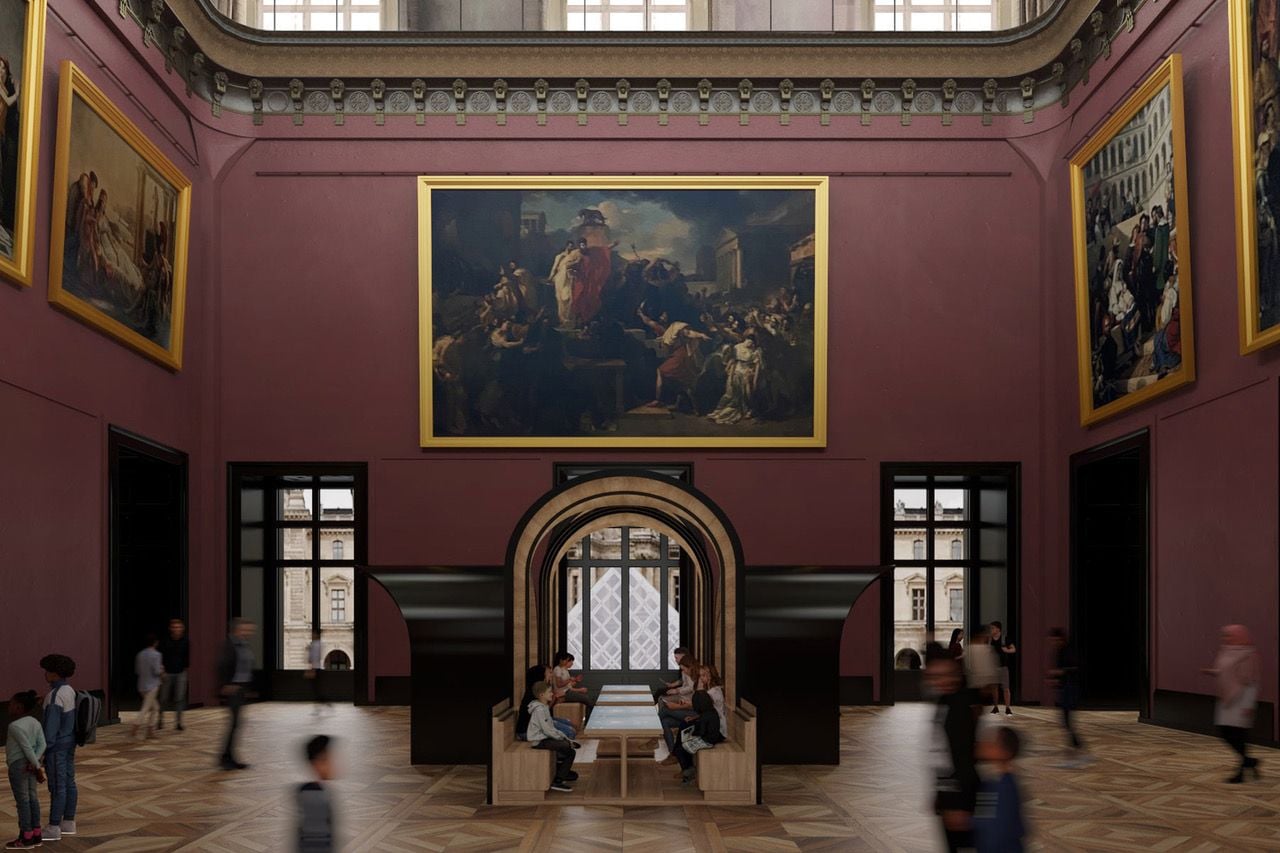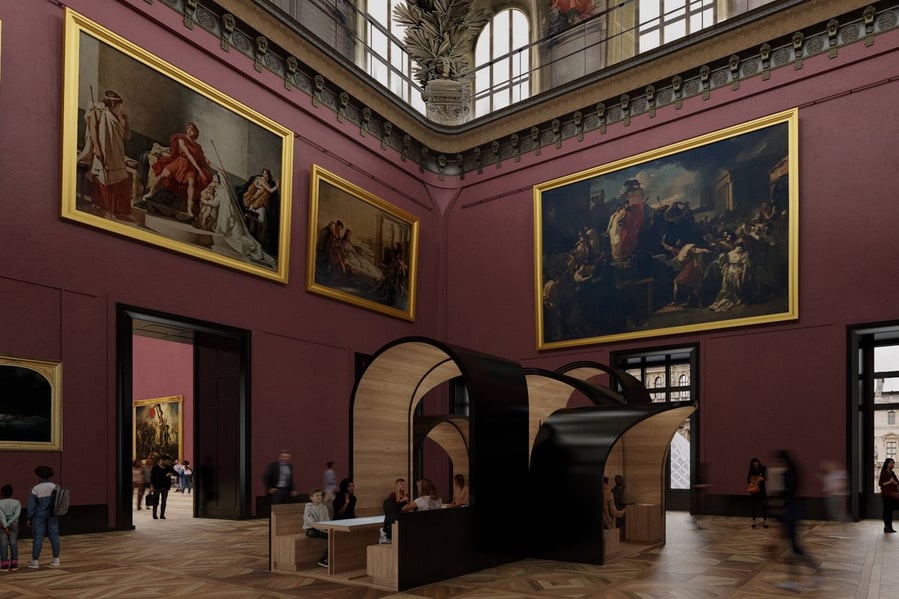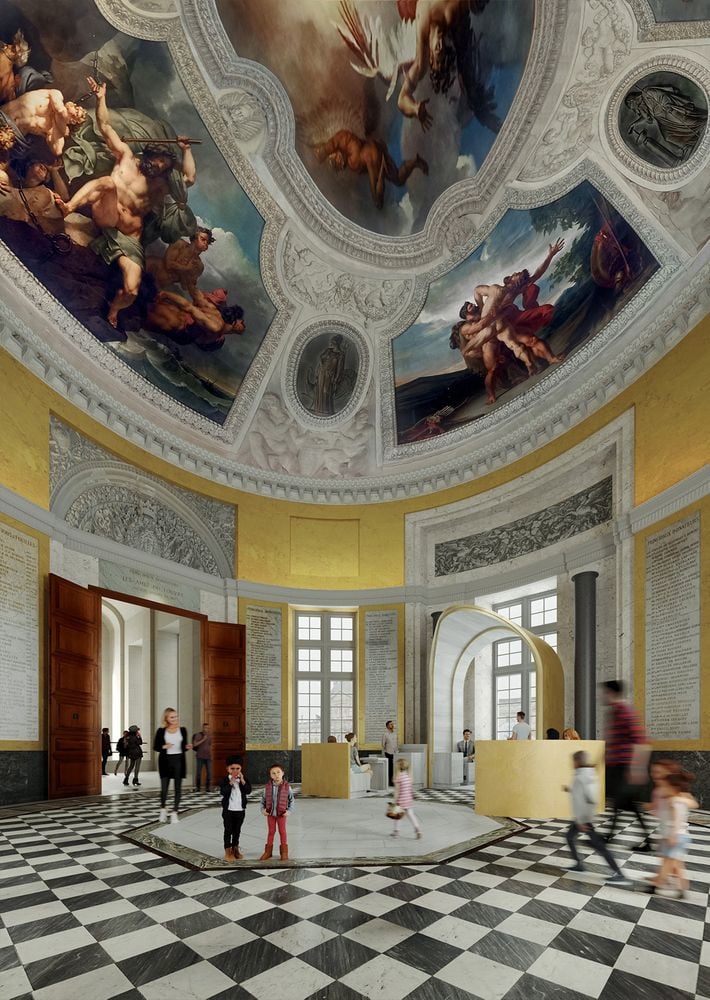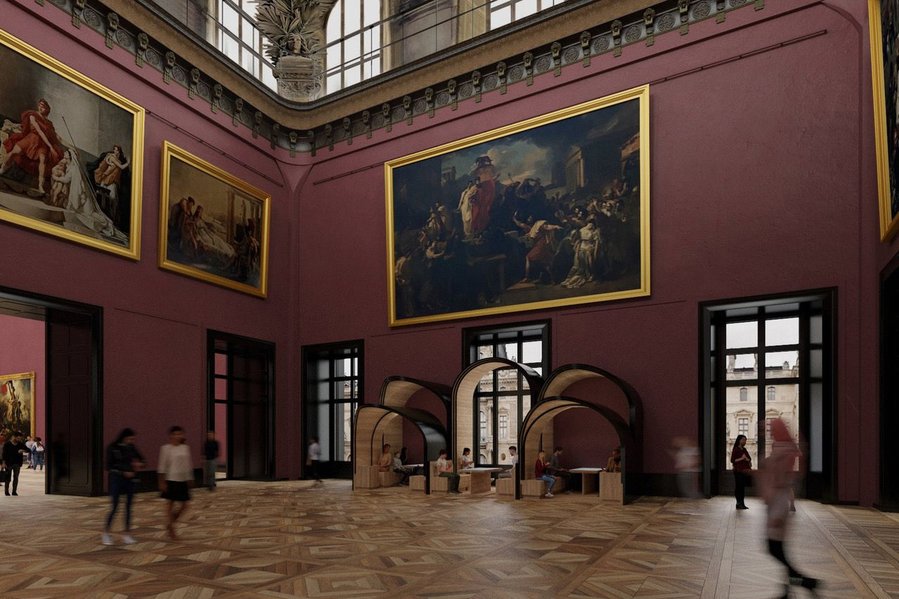Arched Modular Mini Pavilions by Studio Malka Will Soon Fill the Louvre
The Louvre Museum in Paris might be better known for its contents than its architecture, but if there’s one defining feature of the sprawling complex, it’s the classic and elegant arch repeated across its facade. When architecture firm Studio Malka was selected to create 15 modular pavilions within the museum’s prestigious historical collection, they focused on this shape, drawing lines between old and new, modern and historic. The pavilions, which will create new spaces for reflection and engagement among visitors, also pay tribute to the city of Paris itself.

“Indeed, the arch connects the dots of the various periods of the building’s architecture,” the firm explains. “It is also linked directly to the museum’s collections as the arch is showcased in the Mesopotamian section, but also in the Assyrian, Egyptian, Etrurian, and Roman collection, amongst many others. Regarding its shape and position, the Louvre Pavilions will fit naturally in Paris’ Royal axis, a tribute to the perspective of L’Arc de Triomphe and La Grade Arche de la Defense.”

“It creates a new connection to Paris’s architectural major landmarks such as the arcades located on the rue de Rivoli, la Seine’s iconic rivers bridges, or la Tour Eiffel just to name a few. Resolutely timeless and yet contemporary, these 21st-century arches are in direct continuity to those built in Le Louvre since the 12th century, enlightening the Louvre’s fundamental DNA.”

The arch modules are designed to connect to each other in various ways, including face-to-face, back-to-back, and at right angles. Some are vertical, creating alcoves within which visitors can shelter. Others are horizontal, encircling guests within intimate banquette seating areas. These configurations echo the geometries of the museum, including its vaults and domes. The arches’ acoustics also provide another practical function: noise reduction. Sit within one of the vertical arches and you’ll find that it offers a micro-environment with reduced distractions (a nice accommodation for visitors with autism and sensory processing disorders, whether the architects actively considered those needs or not).

Studio Malka also envisions the pavilions as adaptable modules that can respond to future needs, such as new pandemic-related distancing regulations that might arise. “We must be able to prepare for various possibilities and create suitable scenarios in order to be able to welcome users in the best possible conditions,” the architects explain. “This is also why our reception pavilions are not only modular but also mobile; Thus, their positioning and combinations may evolve depending on the different requests, but also at the rate of peak periods, like celebrations or school holidays.”

The new pavilions look like they’ll be a great example of temporary, modular, and mobile interventions that have a low impact on the historic buildings they occupy. Instead of permanently altering the Louvre itself, they respectfully augment its functionality and the way it serves the roughly 10 million visitors who pass through its doors each year. When they’re no longer needed, they can simply be removed, leaving the museum as it was before without a trace of their former presence.




